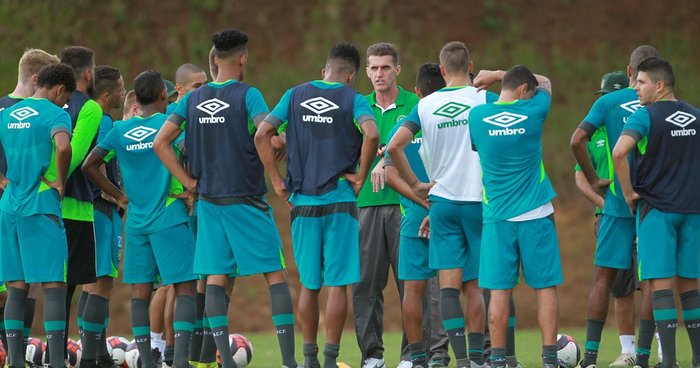Chapecoense: Brazilian team prepare for first game since plane crash

"I said, `are you really on a plane, or in a bar?`"
Journalist Silva was on a plane that went down in the Andes on 29 November. He was one of 71 people who died along with almost the entire Chapecoense football team.
The players were en route to the biggest match in the club`s 43-year history, the final of the Copa Sudamericana against Colombia`s Atletico Nacional.
On Saturday, Chapecoense will play their first match since the crash - a friendly against defending Brazilian league champions Palmeiras.
The people of Chapeco will, once-again, fill the small Arena Conda to see some of the 22 new players who make up the squad.
Three of the six survivors were players, including central defender Neto, who was one of the team`s leaders.
He lay for six hours, trapped beneath the fuselage and trees, before being the last to be pulled out.
Remarkably, he`s already started walking without crutches.
"I remember the lights went out suddenly, then I started praying, asking God to help us," he said. "But a lot of people thought the plane was just landing, because it was not an abrupt fall.
"I remember the moment that I couldn`t hear the plane engine anymore. It was just the wind, and then an alarm.
"But no-one got desperate, there was a lot of people praying. These are the last memories I have."
When Neto woke up in hospital, he was told he had been injured in the match because nobody knew quite how to break the news to him.
But the truth dawned on him when there were no video clips of the match or evidence of his injury.
Chapeco is a quiet, unassuming city with an air of settled contentment. Its population of about 209,553 is only slightly higher than the number of people who crammed into the Maracana Stadium to watch the 1950 World Cup final between Uruguay and Brazil.
But they form a tight-knit community, and a major part of that is the Chapecoense football team.
Club flags and signs adorn shops and bars all over the city.
The relationship between citizens and club is one of mutual and humble respect and affection, according to 41-year-old Karina Dini.
"It was a strong bond, we were all a family," she said, sitting in the office of the language school she runs with her husband.
"There weren`t any players who were going to parties or anything. Most of them were very committed. We could meet them in restaurants or the supermarket.
"It was amazing because players from the first division don`t get that contact with people. They have big cars, they can`t talk to people."
Like Karina, whose husband`s uncle died in the crash, most people here know someone who was on the plane, or someone, like Sirli Freitas, who`s been affected directly.
"My eight-year-old son understands [what happened], but his sister, who`s three, still asks for her dad even though she knows he`s not here any more," she said, through tears.
"If you ask her about him, she says that he was on the plane that crashed, but but at other times she`ll say, `let`s call daddy`."
Outside the Arena Conda, there`s a message to the world: "We were looking for a word to say thanks for all the love we`ve received, and we found several."
Around the stadium, the streets have been painted green and white, in the club`s colours.
There has been a steady procession of press conferences, introducing some of the 22 new players. Rui Costa was brought in from Brazilian club Gremio and made director of football a week after the tragedy.
Costa is adamant that Saturday`s match is far more than a friendly.
"When I got here we had four players and a devastated dressing room. It was all about sadness and silence," he said.
"A dressing room should never be silent and here, it was. So we have accomplished our first goal - you can see a football team training here."
"We had a list with 90 names that we were interested in," he said, as he explained how he assembled the squad in less than two months.
"We were choosing based on technical characteristics, then behaviour, then salary.
"We were working almost 24 hours a day because we knew it was not about just putting them on the pitch to play together.
"We had to respect the culture of the club. That`s what they hired me for."
The last time the people of Chapeco went to the Arena Conda, it was on a day of torrential rain, to receive the bodies of their players, directors and journalists.
On Saturday, they will return, to honour the city`s fallen, and to meet their new family.















































